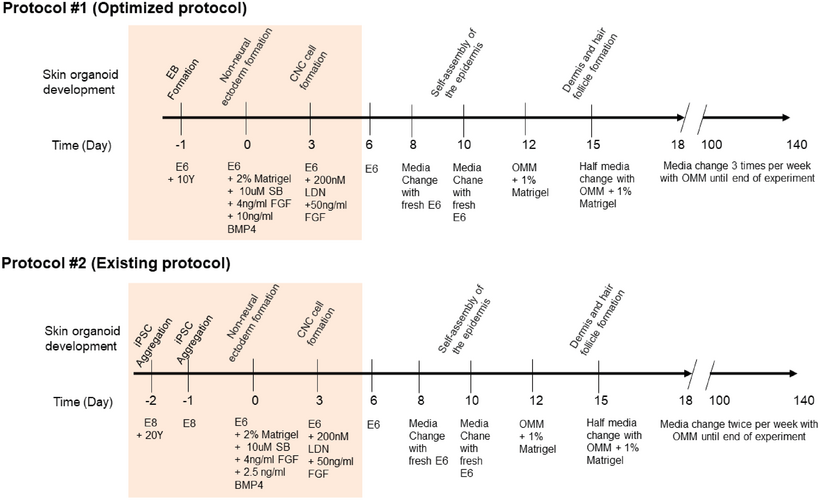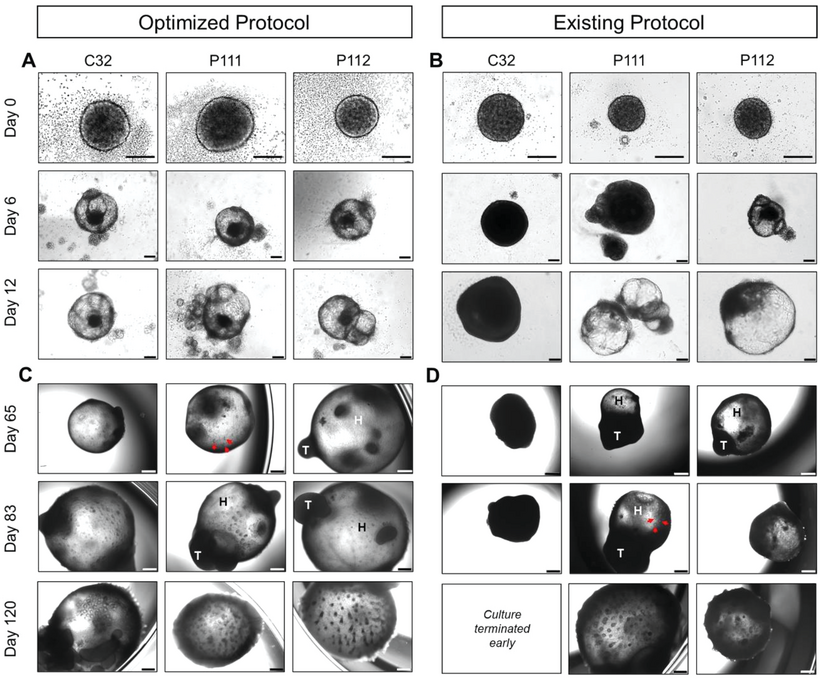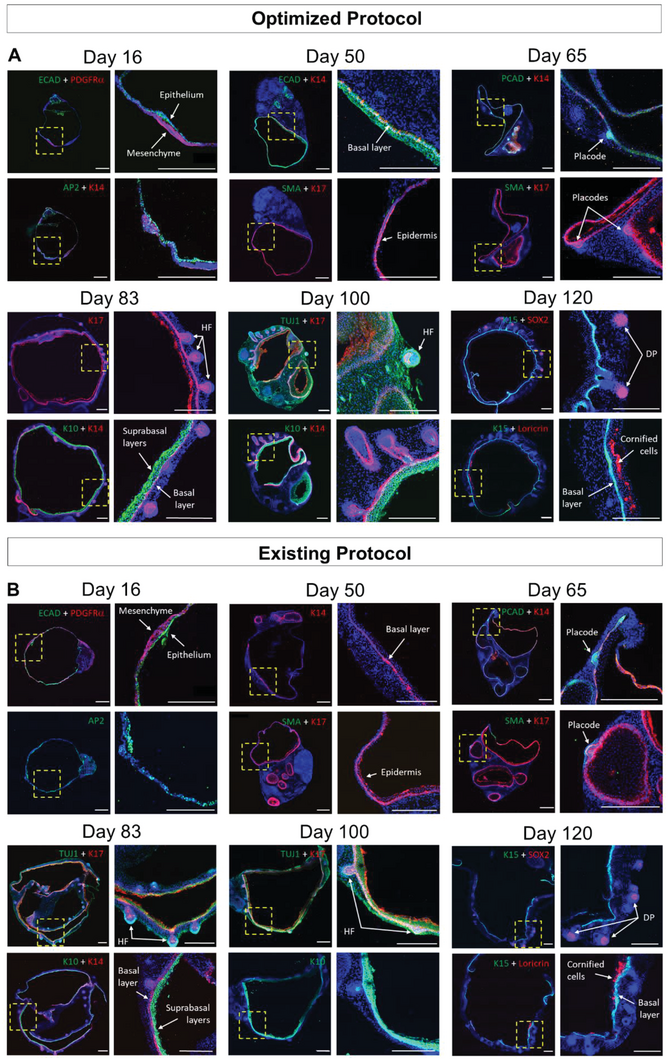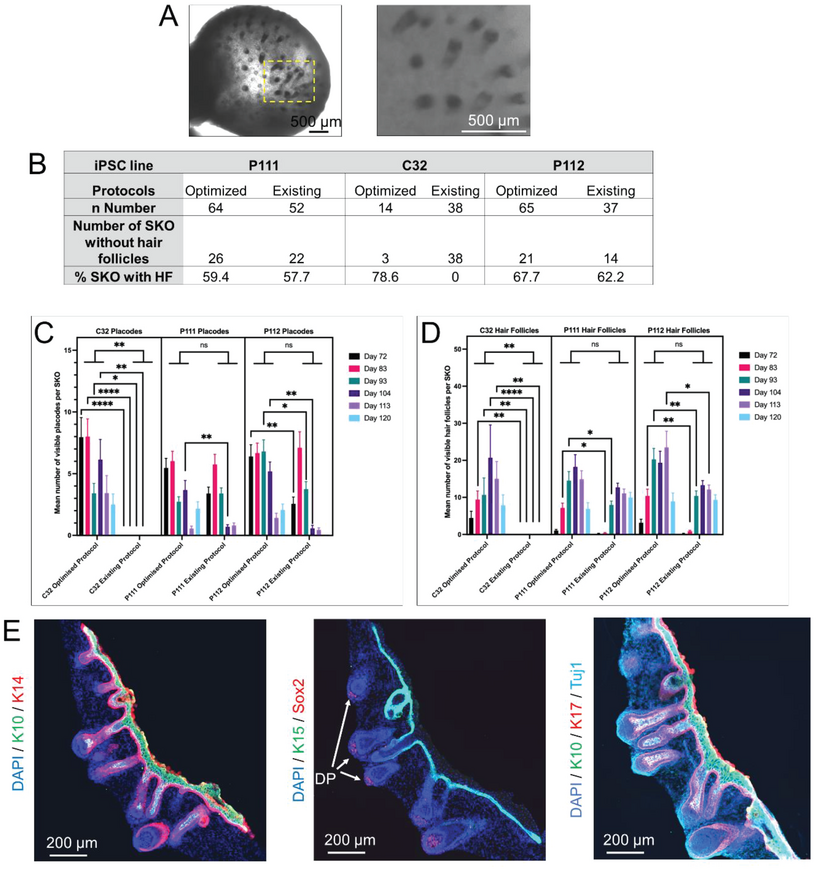Development of Physiologically Relevant Skin Organoids from Human Induced Pluripotent Stem Cells
In daily life, skin injuries are common. Small wounds usually heal quickly, but large-area skin trauma, such as severe burns, can cause great pain to patients and are also a major health and economic burden. There are more than 100 million burn patients worldwide each year. The current gold standard for treating large-area burns, split-thickness skin grafts, has problems such as limited donor areas; whole-thickness skin allografts face the risk of immune rejection and can only be used temporarily. Therefore, the use of stem cells to restore skin function has become a research hotspot, among which human induced pluripotent stem cells (hiPSCs) have attracted much attention.
The emergence of hiPSCs has brought hope for solving these problems. It can be induced by the patient's own cells, can avoid immune rejection, and has multidirectional differentiation potential, which can theoretically provide an unlimited source of cells for skin repair. Although previous studies have successfully differentiated hiPSCs into keratinocytes, existing hiPSC-derived skin substitutes still lack important appendages, such as hair follicles and sweat glands, and cannot fully simulate normal skin functions.
Recently, a study published in Small, "Development of Physiologically Relevant Skin Organoids from Human Induced Pluripotent Stem Cells", has made important progress in the cultivation of skin organoids (SKOs) using hiPSCs.
In this study, researchers used three hiPSC lines (C32, P111, and P112) to cultivate SKOs. They developed an optimized culture protocol and compared it with the existing protocol to explore the differences in the development and maturation of SKOs from different hiPSC lines.
 Fig. 1. A schematic overview of the protocols used for the generation of skin organoids from induced pluripotent stem cells (iPSC).
Fig. 1. A schematic overview of the protocols used for the generation of skin organoids from induced pluripotent stem cells (iPSC).
The results showed that the optimized protocol was effective. In the development process of SKOs, whether it is the existing protocol or the optimized protocol, hiPSCs aggregates will develop into cyst-like structures in about 6-12 days. However, under the optimized protocol, SKOs performed better in subsequent development, with a higher head/tail ratio, and the development process of the three hiPSC lines under this protocol was similar. However, the C32 hiPSC line failed to form a polarized structure under the existing protocol, and the culture had to be terminated early. Through staining analysis of SKOs at different developmental stages, it was found that under the optimized protocol, SKOs at 16 days had formed a bilayered cyst structure, the epithelium was stratified at 100 days, terminally differentiated keratinocytes appeared at 120 days, and hair placodes began to form at around 65 days, and then gradually matured into hair follicles. This process is consistent with the formation time of hair follicles in human embryonic development. At the same time, the optimized protocol also reduced the differentiation of hiPSCs into the chondrocyte lineage and reduced the proportion of cartilage tissue generated.
 Fig. 2. Generation of human induced pluripotent stem cells (hiPSCs)-derived skin organoids (SKOs) from different cell lines.
Fig. 2. Generation of human induced pluripotent stem cells (hiPSCs)-derived skin organoids (SKOs) from different cell lines.
In terms of hair follicle induction ability, the optimized protocol also performed well. The researchers evaluated the level of hair follicle induction by observing the number of protruding hair placodes at different time points. The results showed that when using P111 and P112 hiPSC lines, both protocols could induce SKOs containing hair follicles, but at specific time points, the number of hair placodes and hair follicles produced by the optimized protocol was significantly higher. For the C32 hiPSC line, the existing protocol could not produce hair follicles, while 78.6% of SKOs under the optimized protocol were able to grow hair follicles.
 Fig. 3. Skin organoids (SKOs) develop a stratified epidermis and hair follicles (HFs) in the optimized differentiation protocol.
Fig. 3. Skin organoids (SKOs) develop a stratified epidermis and hair follicles (HFs) in the optimized differentiation protocol.
 Fig. 4. The optimized differentiation protocol contributes to an enhanced hair inductive capacity in human induced pluripotent stem cell (hiPSCs)- derived skin organoids (SKOs).
Fig. 4. The optimized differentiation protocol contributes to an enhanced hair inductive capacity in human induced pluripotent stem cell (hiPSCs)- derived skin organoids (SKOs).
It is worth mentioning that the SKOs cultivated using the optimized protocol also achieved diversified development of skin tissue. At 120 days, SKOs showed pigmentation, and were found to contain melanocytes, while Merkel cells expressing keratin 20 were also produced. In addition, SKOs successfully generated eccrine sweat glands and sebaceous glands, which means that SKOs containing eccrine sweat glands were successfully constructed using different iPSC lines, laying the foundation for in-depth research on skin morphogenesis, simulation of skin diseases and cancer, and is expected to promote the development of skin regenerative medicine and bring new hope to skin trauma repair and related disease treatment.
Reference
-
Shafiee, Abbas, et al. "Development of physiologically relevant skin organoids from human induced pluripotent stem cells." Small 20.16 (2024): 2304879.

Your email address will not be published. Required fields are marked *